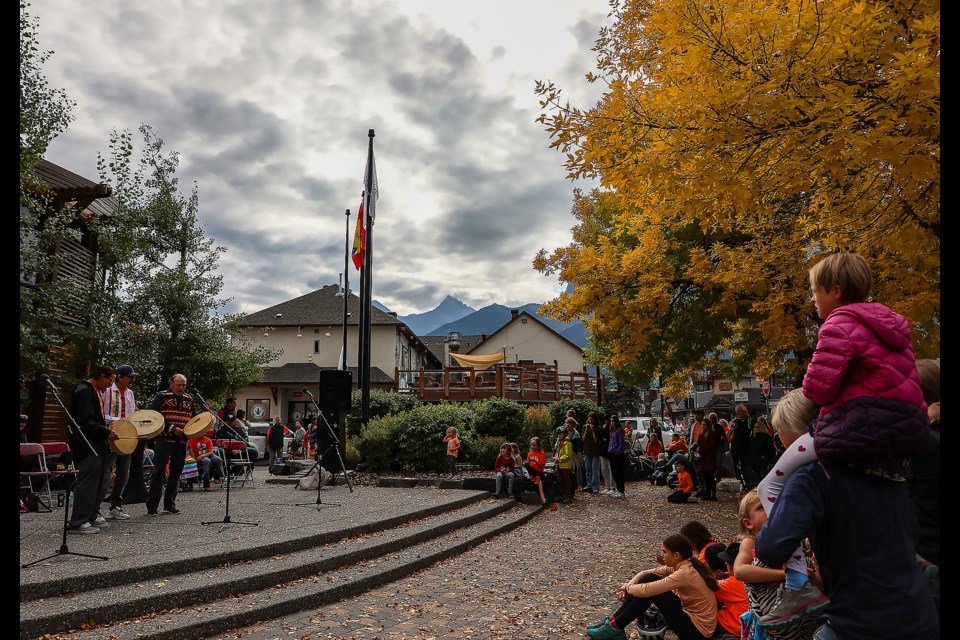ÎYÂRHE NAKODA – Discussions have begun in the Bow Valley region to develop one or more Indigenous centres, following closely in the footsteps of Wazin Îchinabi Ti (House of Oneness) which opened its doors in Cochrane on Jan. 24.
The centre in Cochrane is the result of extensive planning by Îyârhe (Stoney) Nakoda First Nation elders and knowledge keepers working in cooperation with the Rotary Club of Cochrane and like-minded neighbours.
“We chose the name Wazin Îchinabi Ti, House of Oneness, because we wanted to reflect the Stoney worldview that all of creation is interconnected,” said Trent Fox, who, along with his mother Tina, is an advisor to the initiative.
The centre was proposed as a multi-use site to serve as a one-stop-shop for Indigenous peoples – not just the Îyârhe Nakoda – pursuing business opportunities and seeking a spectrum of services. It also aims to create a social, cultural, and economic connection with the non-Indigenous community.
At the centre, all people are one, regardless of race or culture. It is planned to operate as a non-profit organization that will provide the community with educational programming and services that focus on promoting Truth and Reconciliation principles.
Most importantly, it is Indigenous-led, said Cochrane Rotarian Michael Bopp, who sits on the centre’s board of directors along with other members of the Rotary and Indigenous community.
Bopp is also a co-founder of Four Worlds International and is a director for the Four Worlds Centre for Development Learning, which is dedicated to building the capacity of communities and professional organizations for sustainable participatory development. He has 20-plus years of experience working with Indigenous communities and development organizations in Canada and overseas.
“The centre will be sort of an Indigenous embassy, so that when anybody in town wants to know how to manage Indigenous protocols, they can visit the centre to do that,” he said.
“For example, if you’re supposed to be doing an archaeological assessment, first, what does it have to do with Indigenous peoples? Well, they’re the ones that live here, and you need to work through elders to do that. There’s a certain way that should go.”
With around 2,500 Indigenous peoples living in Cochrane, according to the 2021 census, it’s also important to have representation in the community.
“Although it’s an Indigenous centre, similar to what a friendship centre can be, it will also serve as a place where people can get more information, some education on Indigenous issues – not Stoney specific,” said Fox.
“But it’s also a place where Stoney people can educate those who are interested about the Stoney culture, the language, the history, and our relationship with the government.”
In nearby Canmore, a smaller proportion of the population identified as Indigenous in the 2021 census, with around 375 people.
While Fox believes Cochrane acts as more of an urban hub to the Îyârhe Nakoda given the proximity of Mînî Thnî and affordability compared to Canmore, its next closest neighbour, he believes centres in Canmore and Banff can offer further opportunities to share the stories of his First Nation and others with ties to the area.
The Banff Canmore Community Foundation and its Moving Mountains initiative – focused on areas such as improving local, social and Indigenous economy, as well as environmental and cultural learning – is currently discussing the idea of potentially developing an Indigenous centre in Banff. The organization is still in the early days of discussion, however, and was not ready to confirm details with the Outlook.
“Banff has a historic importance to not just the Stoney but to the Blackfoot, to the Cree, to the Kootenay [Ktunaxa], so I think it would be a really positive,” Fox said of the initiative.
Meanwhile, Travel Alberta is currently conducting a feasibility study for a future Indigenous Cultural Centre which would potentially be based out of the Canmore Visitor Information Centre off Highway 1. The space is currently utilized under a partnership with Tourism Canmore Kananaskis, which is also negotiating with the provincial tourism organization to renew its use of the site.
“I think that would be beneficial not just to the Indigenous peoples but to the non-Indigenous community as they can start learning about Indigenous issues,” Fox said of the idea. “Really, any large urban centre should have a friendship centre where they can start connecting with Indigenous people, learning from one another.”
Bopp cautioned against the use of Indigenous centres for the purpose of tourism where Banff and Canmore are concerned, however, and said he hopes any spaces that do come to fruition, are Indigenous-led and built on the principles of Truth and Reconciliation.
“We’re at a juncture in this country where we’re trying to heal the relationships between Indigenous and non-Indigenous people,” Bopp said. “This country was founded on a whole lot of bad stuff ... there are people who don’t even want to face it. But you can't have reconciliation without truth.
“It’s about acknowledging and learning about the past, but also moving forward in a positive way to build something good.”
The Local Journalism Initiative is funded by the Government of Canada. The position covers Îyârhe (Stoney) Nakoda First Nation and Kananaskis Country.



